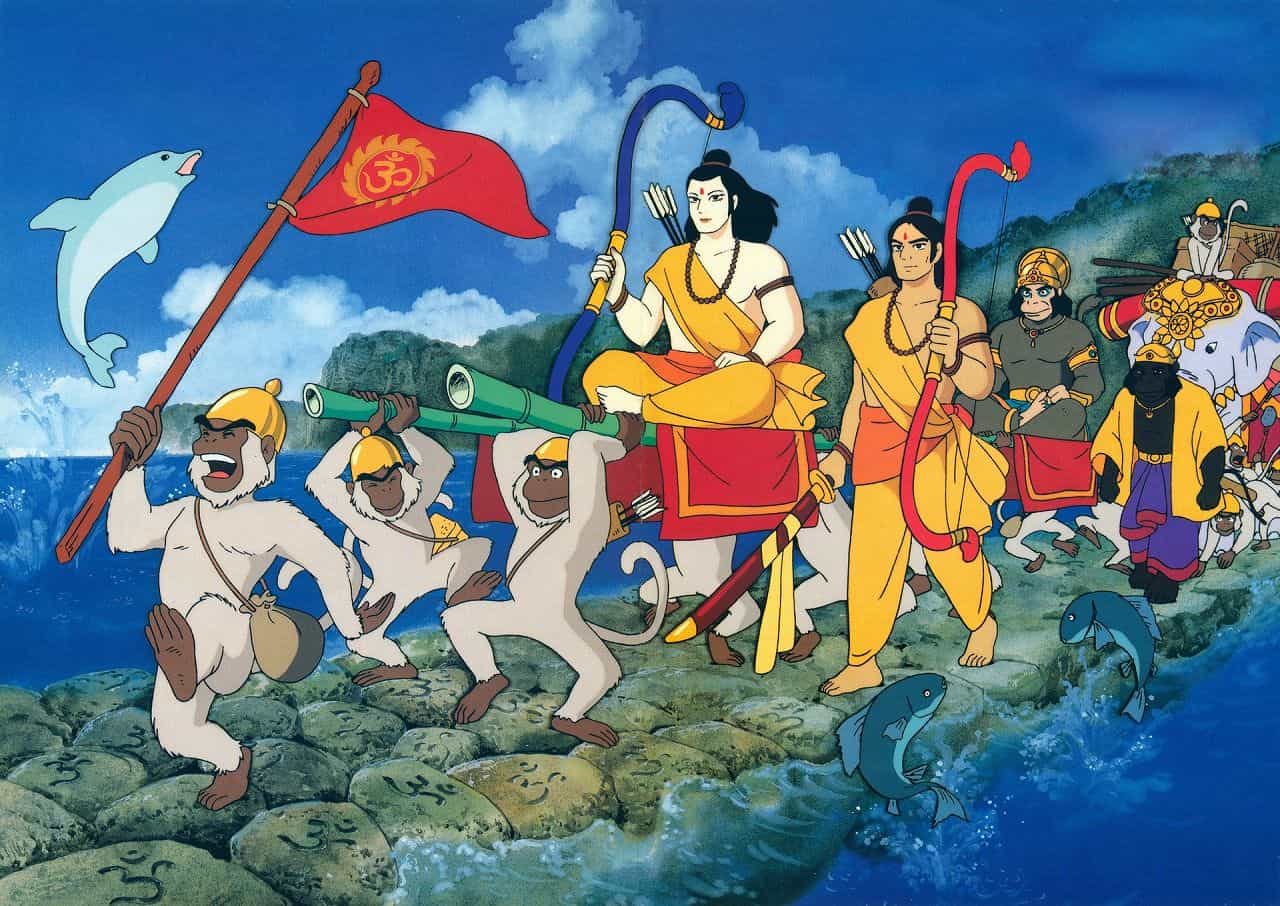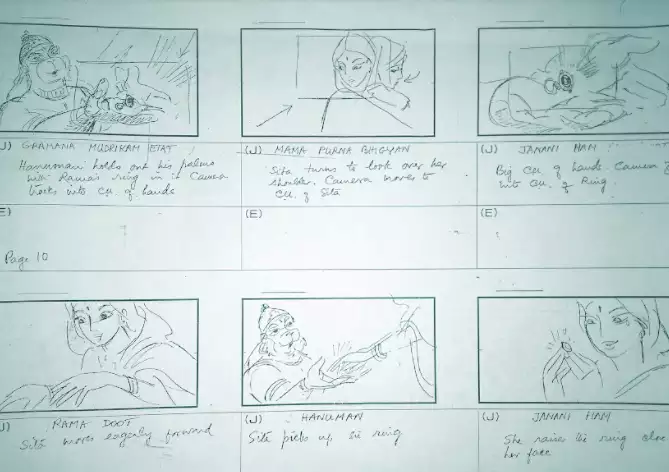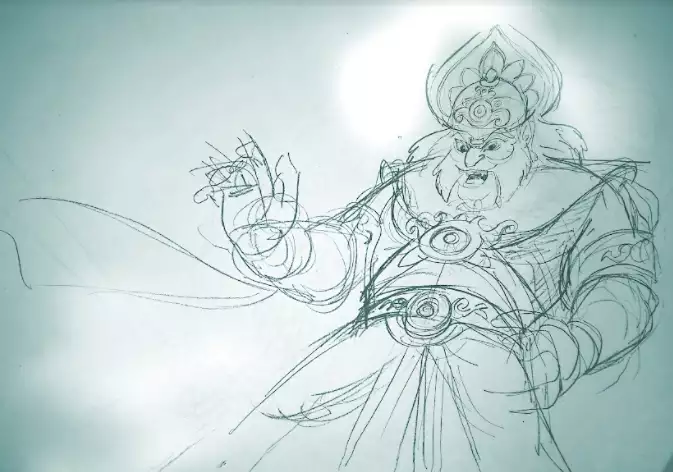India’s ties with anime can be traced back to the early days of Japanese animation. In 1992, the anime film ‘Ramayana: The Legend of Prince Rama’ showcased vibrant visuals, intricate character designs, and a compelling narrative that brought the ancient Indian mythology to life in a fresh manner, and significantly contributed to India’s growing interest in anime. The anime feature co-directed by Yugo Sako and legendary Indian animator Ram Mohan, and produced by Sako and Sako Company LTD., gained recognition for its unique blend of Japanese animation style with the traditional Indian story-telling and was the one of the first forays of anime in India. Anime’s popularity since then has only soared higher in recent years, with a growing number of Indian fans embracing the genre and seeking out various anime series and films.
In a stunning revelation that has captured the attention of enthusiasts nationwide, Livemint brought to light a captivating phenomenon—the exponential rise of anime’s popularity in India. The enthralling Japanese animation genre has woven its spell on viewers of all ages, leaving them wanting for more and as per recent reports, the Indian audience has wholeheartedly embraced anime, showcasing an insatiable appetite for its visually captivating and emotionally resonant storytelling. Viewers of diverse age groups have been bewitched by the sheer brilliance and artistic finesse displayed in Japanese animation.
A recent April report from CNBC TV18 sheds light on the astounding triumph of the Japanese animated film Suzume, swiftly surpassing the ₹10 crore in Indian box office sales within a few weeks of its release. The film’s grand premiere in Mumbai was nothing short of a spectacle, drawing in over 800 attendees from cities far and wide, further solidifying the widespread appeal of anime.
While the Indian film industry grapples with the challenge of luring audiences to theatres, visionary companies have astutely embarked on localising anime shows in regional languages, unraveling a strategy that profoundly resonates with viewers. A multitude of anime titles have left an indelible mark on Indian viewers, offering them a kaleidoscope of captivating narratives and unforgettable characters. Fan-favourite series like Attack on Titan, My Hero Academia, Naruto, Demon Slayer: Kimetsu no Yaiba, and One Piece have taken the country by storm, igniting a passionate fandom that stretches across generations. The intricate storytelling, stunning animation, and profound themes explored in these anime productions have struck a chord with Indian viewers, fostering an ardent devotion to the genre. These anime productions delve deep into intricate themes, such as friendship, loss, and racism, presenting narratives that evoke a powerful emotional response.
Originally intended for the 9-25 year-old demographic, anime has now captured the hearts not only of its core audience but also the discerning Gen Y and Gen Z cohorts. This newfound appeal can be attributed to the spellbinding visual effects that accompany these animated wonders, as affirmed by Sanjeev Kumar Bijli, the imaginative Executive Director of PVR Inox Ltd. The resounding success of notable Japanese anime titles at PVR Inox Pictures, including Jujutsu Kaisen: Zero, One Piece Film Red, Demon Slayer: Kimetsu no Yaiba-To the Swordsmith Village, and Studio Ghibli classics like Spirited Away and My Neighbor Totoro, has resulted in a collective gross box office sales figure of approximately ₹18 crore.
In response to India’s long standing fervour for Japanese anime, cinema chains have embarked on a proactive journey of curating content that caters to a growing and diverse range of audiences, meticulously tailoring their offerings to align with their preferences. Rahul Puri, the insightful Managing Director of Mukta Arts and Mukta A2 Cinemas, emphasises the conscious endeavour to deliver content that appeals to various target demographics. He further elucidates how the advent of over-the-top (OTT) platforms has amplified the impact, enabling viewers to transcend linguistic barriers and immerse themselves in a vast array of captivating content housed under a unified digital platform.
Animation archives by Ram Mohan via The Animation Society of India.
Amidst the rising tide of this phenomenon, Netflix, a prominent global streaming platform, has made a decisive foray into the world of anime, proudly showcasing an extensive repertoire of anime titles. In a daring manoeuver, they are poised to unleash a remarkable lineup of 40 new anime productions worldwide this year, featuring beloved series such as Attack on Titan, My Hero Academia, and Naruto, as disclosed in the earlier mentioned April report by CNBC TV18. The streaming giant has brought renowned anime classics like Studio Ghibli’s Spirited Away, Your Name, and Cowboy Bebop to Indian screens, captivating audiences with their imaginative worlds and captivating narratives. This ambitious undertaking is geared towards satisfying the insatiable cravings of anime enthusiasts across the globe.
The impact of anime extends far beyond its entertainment value. Its influence can be felt in various aspects of Indian culture, ranging from cosplay events and merchandise sales to the emergence of local anime communities and fan clubs. But the meteoric rise of anime owes much of its success to the pervasive influence of social media.
These passionate communities converge on social platforms, fostering a vibrant ecosystem where they wholeheartedly share their love for this captivating genre. Through their collective enthusiasm and word-of-mouth recommendations, anime has triumphantly solidified its place in the hearts of countless Indian viewers.
As the vibrant colours, intricate storylines, and enchanting characters of Studio Ghibli films, such as Howl’s Moving Castle and Princess Mononoke grace screens across India, enthralling audiences with their unrivaled magic, it becomes abundantly clear that anime has not only captured India’s imagination but has firmly entrenched itself as an indelible cultural phenomenon within the country’s fabric.
Words by Esha Aphale.
Cover Image – ‘Ramayana: The Legend of Prince Rama.’ via Tumblr.







